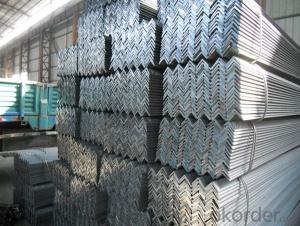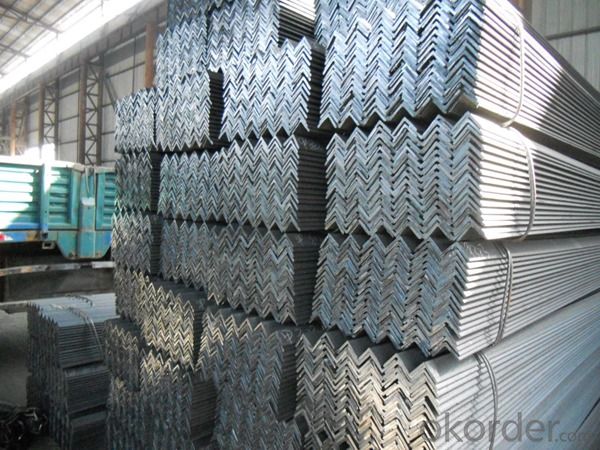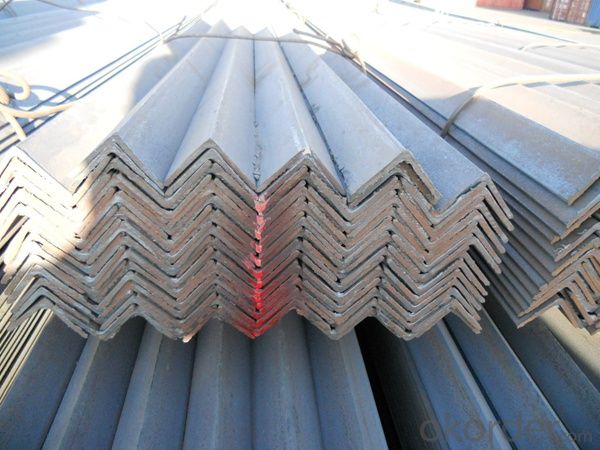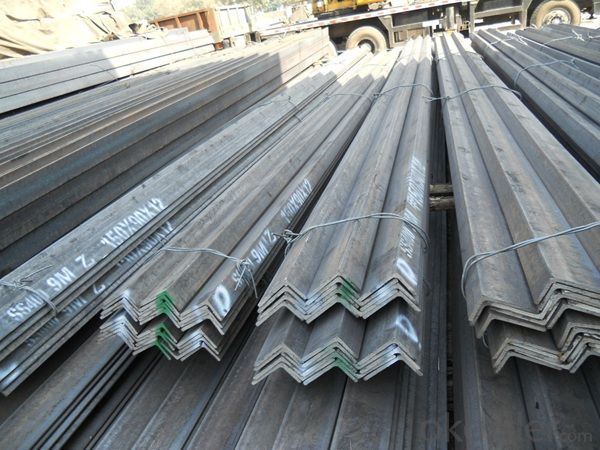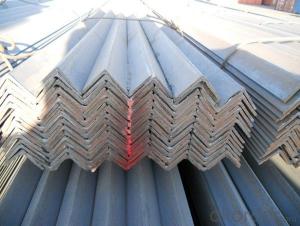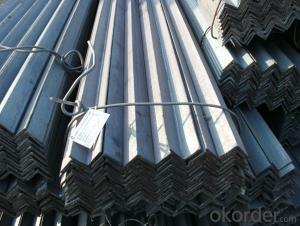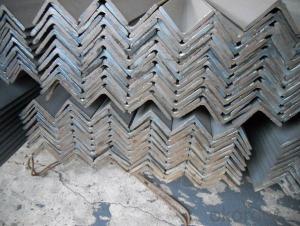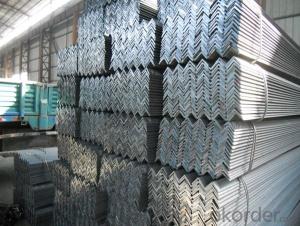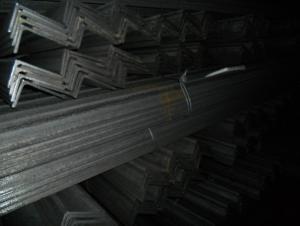HR Steel Angle Beams for Structures and for Buildings
- Loading Port:
- Guangzhou
- Payment Terms:
- TT OR LC
- Min Order Qty:
- 25 m.t.
- Supply Capability:
- 200000 m.t./month
OKorder Service Pledge
OKorder Financial Service
You Might Also Like
Product Description:
OKorder is offering HR Steel Angle Beams for Structures and for Buildings at great prices with worldwide shipping. Our supplier is a world-class manufacturer of steel, with our products utilized the world over. OKorder annually supplies products to European, North American and Asian markets. We provide quotations within 24 hours of receiving an inquiry and guarantee competitive prices.
Product Applications:
HR Steel Angle Beams for Structures and for Buildings are ideal for structural applications and are widely used in the construction of buildings and bridges, and the manufacturing, petrochemical, and transportation industries.
1. Supporting members, most commonly in the house raising industry to strengthen timber bears under houses. Transmission line towers, etc
2. Prefabricated structure
3. Medium scale bridges
4. It is widely used in various building structures and engineering structures such as roof beams, bridges, transmission towers, hoisting machinery and transport machinery, ships, industrial furnaces, reaction tower, container frame and warehouse etc.
Product Advantages:
HR Steel Angle Beams for Structures and for Buildings are durable, strong, and resist corrosion. And all the beams will be produced by steel billets of high quanlity in China with competitive prices.
Main Product Features:
· Premium quality
· Prompt delivery & seaworthy packing (30 days after receiving deposit)
· Corrosion resistance
· Can be recycled and reused
· Mill test certification
· Professional Service
· Competitive pricing
Product Specifications:
1. Invoicing on theoretical weight or actual weight as customer request
2. Length: 6m, 9m, 12m as following table
3. Sizes

Sizes: 25mm-250mm | ||
a*t | ||
25*2.5-4.0 | 70*6.0-9.0 | 130*9.0-15 |
30*2.5-6.6 | 75*6.0-9.0 | 140*10-14 |
36*3.0-5.0 | 80*5.0-10 | 150*10-20 |
38*2.3-6.0 | 90*7.0-10 | 160*10-16 |
40*3.0-5.0 | 100*6.0-12 | 175*12-15 |
45*4.0-6.0 | 110*8.0-10 | 180*12-18 |
50*4.0-6.0 | 120*6.0-15 | 200*14-25 |
60*4.0-8.0 | 125*8.0-14 | 250*25 |
5. Payment terms:
1).100% irrevocable L/C at sight.
2).30% T/T prepaid and the balance against the copy of B/L.
3).30% T/T prepaid and the balance against L/C
6.Material details:
Alloy No | Grade | Element (%) | |||||
C | Mn | S | P | Si | |||
Q235 | B | 0.12—0.20 | 0.3—0.7 | ≤0.045 | ≤0.045 | ≤0.3 | |
Alloy No | Grade | Yielding strength point( Mpa) | |||||
Thickness (mm) | |||||||
≤16 | >16--40 | >40--60 | >60--100 | ||||
≥ | |||||||
Q235 | B | 235 | 225 | 215 | 205 | ||
Alloy No | Grade | Tensile strength (Mpa) | Elongation after fracture (%) | ||||
Thickness (mm) | |||||||
≤16 | >16--40 | >40--60 | >60--100 | ||||
≥ | |||||||
Q235 | B | 375--500 | 26 | 25 | 24 | 23 | |
FAQ:
Q1: How do we guarantee the quality of our products?
A1: We have established an advanced quality management system which conducts strict quality tests at every step, from raw materials to the final product. At the same time, we provide extensive follow-up service assurances as required.
Q2: How soon can we receive the product after purchase?
A2: Within three days of placing an order, we will begin production. The specific shipping date is dependent upon international and government factors, but is typically 7 to 10 workdays.
Q4: Can HR Steel Angle Beams for Structures and for Buildings rust?
A4: Maybe there is some little rust on the suface of goods, but it dosen't afect the usage.
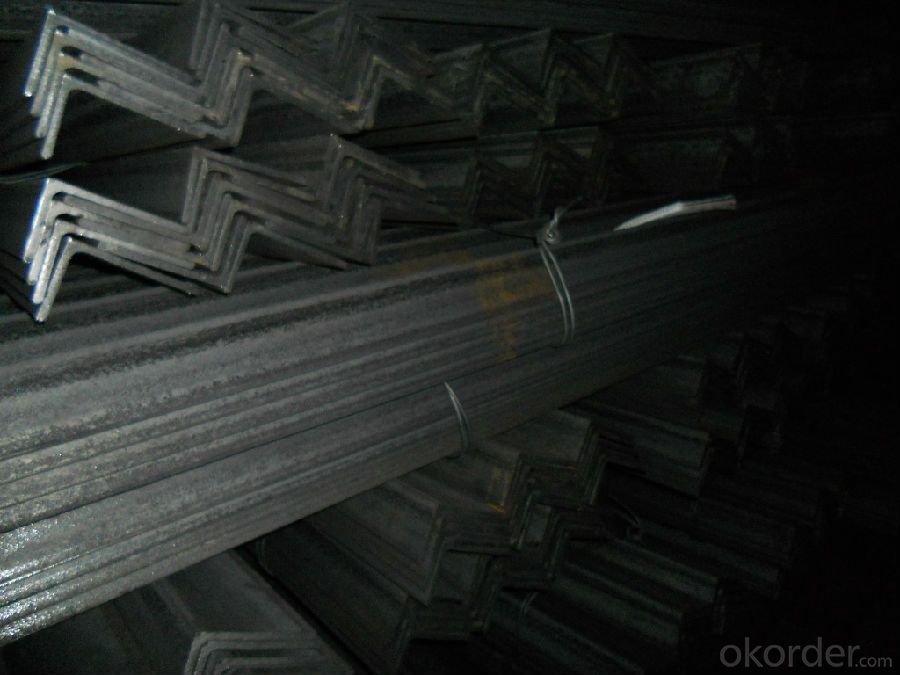
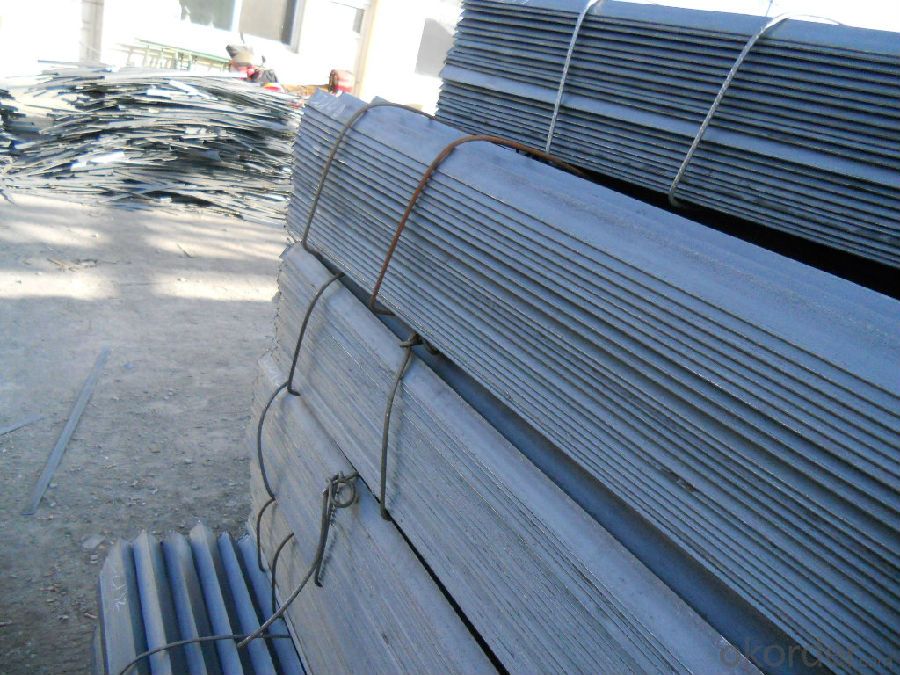
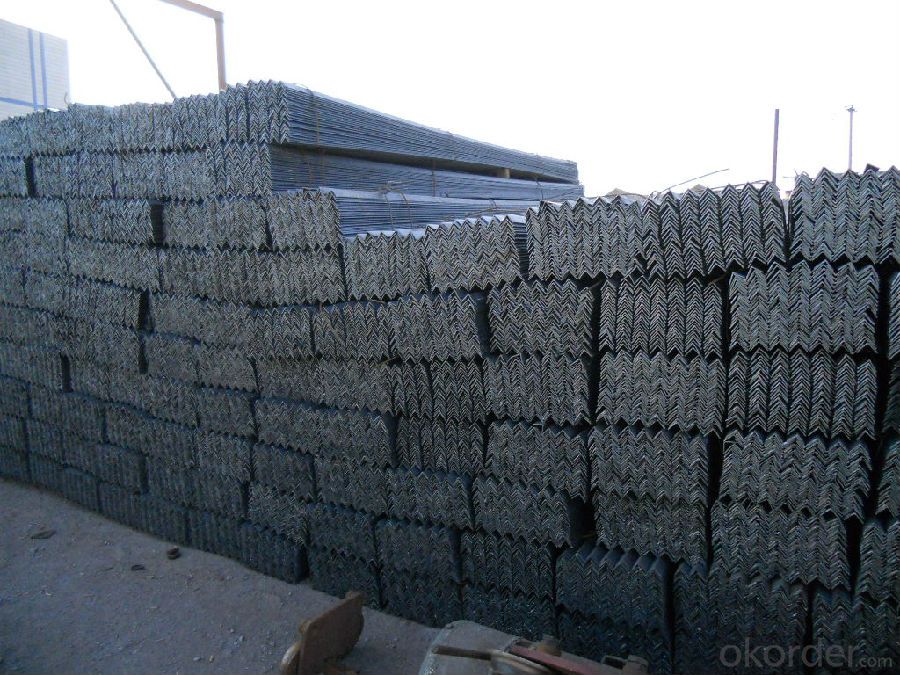
- Q: What are the different dimensions used to specify steel angles?
- The different dimensions used to specify steel angles include the length of each leg, the thickness of the material, and the angle of inclination between the legs.
- Q: Can steel angles be used for framing in modular construction?
- Yes, steel angles can be used for framing in modular construction. Steel angles are commonly used as structural elements in construction due to their high strength and versatility. They can be easily bolted or welded together to create a sturdy framework for modular construction. By using steel angles for framing, modular construction can achieve greater structural integrity and stability. Additionally, steel angles are durable and resistant to corrosion, making them suitable for various environmental conditions. Overall, steel angles are a suitable choice for framing in modular construction projects.
- Q: How do you determine the deflection of a steel angle?
- To determine the deflection of a steel angle, you need to consider various factors such as the material properties of the steel, the dimensions of the angle, and the applied load. The deflection of a steel angle can be determined using mathematical equations and formulas, specifically those related to structural mechanics. Firstly, you need to determine the moment of inertia (I) of the steel angle, which depends on its cross-sectional shape and dimensions. The moment of inertia represents the resistance of the angle to bending and is a crucial parameter in calculating deflection. The moment of inertia can be obtained from engineering handbooks or calculated using mathematical formulas specific to the shape of the angle. Next, you need to determine the load that is applied to the steel angle. This load can be in the form of a concentrated force, a distributed load, or a combination of both. The magnitude and distribution of the load will influence the deflection of the angle. Once you have determined the moment of inertia and the applied load, you can use the appropriate deflection equation or formula to calculate the deflection of the steel angle. The specific equation used will depend on the type of loading and the boundary conditions of the angle (e.g., whether it is simply supported or fixed at both ends). For example, if the steel angle is subjected to a concentrated load at its midpoint and is simply supported, you can use the equation for deflection of a simply supported beam under a concentrated load. This equation relates the deflection (δ) to the applied load (F), the length of the angle (L), the moment of inertia (I), and other relevant constants. It is important to note that the deflection calculated using these equations is an approximation and does not take into account factors such as material imperfections, fabrication tolerances, or the effects of dynamic loading. Therefore, it is always advisable to consult relevant design codes, standards, or engineering handbooks to ensure accurate and safe design practices when determining the deflection of a steel angle.
- Q: What is the typical yield stress of steel angles?
- The yield stress of steel angles can differ based on the grade and type of steel utilized. Nevertheless, for frequently employed carbon steels, the yield stress typically varies between 36,000 and 50,000 psi. This indicates that the steel angles can endure a specific level of stress or pressure prior to experiencing deformation or permanent alteration in shape. It is crucial to acknowledge that distinct steel alloys and treatments can lead to different yield stresses. Therefore, it is essential to refer to the specific specifications or reference materials pertaining to the particular steel angle in question.
- Q: How do you design connections for steel angles to steel beams?
- Designing connections between steel angles and steel beams requires careful consideration and a step-by-step approach. Here is a general overview of the process: 1. Load determination: The first step involves identifying the loads that will impact the connection. These include vertical and horizontal loads, as well as any moments applied. These loads are crucial in determining the required strength of the connection. 2. Selection of appropriate materials: Based on the loads and design criteria, suitable steel angles and beams must be chosen for the connection. Factors such as material grade, size, and shape should be taken into account. 3. Connection analysis: The connection is analyzed to determine the necessary strength. This involves calculating shear, moment, and axial forces that will act on the connection. Structural analysis methods are employed, considering both service loads and ultimate strength requirements. 4. Connection type determination: Once the analysis is complete, the appropriate connection type is selected. Common options include bolted, welded, or a combination of both. Factors such as available space, ease of construction, and structural requirements are considered. 5. Connection design: The connection is designed to meet the required strength and performance criteria. This includes determining the number, size, and layout of bolts or welds, as well as any additional reinforcement or stiffeners that may be necessary. Shear, moment, and axial force resistance, along with adherence to design codes and standards, are considered. 6. Detailing and fabrication: Detailed drawings and specifications, including dimensions, tolerances, and material specifications, are provided for the connection. Coordination with fabricators and contractors ensures accurate fabrication and installation. 7. Quality control and inspection: Throughout fabrication and construction, quality control checks and inspections are conducted to ensure correct fabrication and installation of the connection. Visual inspections, non-destructive testing, and load testing, if required, are performed. Consulting with a structural engineer or experienced professional in steel connection design is essential to ensure the connection is designed safely and complies with applicable building codes and standards.
- Q: What are the different testing methods for steel angles?
- There are several testing methods for steel angles, including visual inspection, dimensional measurement, hardness testing, chemical analysis, and mechanical testing. Visual inspection involves examining the angles for any visual defects or irregularities. Dimensional measurement ensures that the angles meet the specified size and shape requirements. Hardness testing determines the hardness of the steel, which is an important factor in its strength and durability. Chemical analysis is performed to check the composition and purity of the steel, ensuring that it meets the required standards. Mechanical testing involves subjecting the steel angles to various loads and stresses to evaluate their mechanical properties such as strength and ductility.
- Q: How do steel angles contribute to the overall sustainability of a building?
- Steel angles contribute to the overall sustainability of a building in several ways. Firstly, steel angles are made from recycled materials, making them a sustainable option for construction. Steel is one of the most recycled materials in the world, with a high recycling rate, reducing the need for virgin resources and minimizing the environmental impact of extraction and production. Additionally, steel angles offer structural efficiency, which means that they can support larger loads with less material compared to other building materials. This efficiency reduces the amount of steel required in construction, minimizing the carbon footprint associated with steel production and transportation. Furthermore, steel angles are highly durable and long-lasting. They have a high resistance to corrosion, fire, and pests, which reduces the maintenance and replacement needs over the building's lifespan. This durability translates into reduced waste generation and lower life-cycle costs, making the building more sustainable in the long run. Moreover, steel angles are versatile and can be easily reused or repurposed. If a building needs to be renovated or demolished, the steel angles can be salvaged and reused in other construction projects. This promotes a circular economy approach and minimizes waste generation, contributing to the overall sustainability of the construction industry. Lastly, steel angles have excellent thermal properties, which can enhance the energy efficiency of a building. They can be used as part of the building envelope, helping to reduce energy consumption for heating and cooling. By improving the insulation and airtightness of a building, steel angles contribute to lower energy demand and reduced greenhouse gas emissions. In conclusion, steel angles contribute to the overall sustainability of a building through their recycled content, structural efficiency, durability, recyclability, and energy-saving properties. By choosing steel angles in construction, we can promote resource conservation, reduce waste generation, and minimize the environmental impact of the built environment.
- Q: Can steel angles be used for playground equipment?
- Yes, steel angles can be used for playground equipment. Steel angles provide strength, durability, and stability, making them suitable for various playground structures such as swing sets, climbing frames, and slides.
- Q: Are steel angles suitable for coastal or saltwater environments?
- Yes, steel angles are suitable for coastal or saltwater environments. They are widely used in various marine applications due to their excellent corrosion resistance properties. The alloying elements in steel angles, such as chromium and nickel, help to protect against rust and corrosion caused by exposure to saltwater or high humidity. Additionally, proper maintenance and coatings can further enhance their durability in these environments.
- Q: Are steel angles fire-resistant?
- Steel angles possess a certain degree of fire resistance. Steel, as a non-combustible substance, does not ignite or contribute to the combustion process. Its exceptional melting point, typically hovering at 1370°C (2500°F), ensures that it retains its structural integrity even when subjected to high temperatures. Nevertheless, it is crucial to recognize that the fire resistance of a structure or component reliant on steel angles hinges on various factors, such as the design, dimensions, and arrangement of said angles, as well as the implementation of fire protection measures. Fire-resistant coatings, fireproofing substances, or fire-resistant insulation can be employed to bolster the fire resistance of steel angles. These supplementary fire protection methods have the capacity to provide a certain level of insulation, impeding the transfer of heat to the steel and prolonging the time it takes for the steel to reach its critical temperature. This grants occupants more time to evacuate the premises and affords firefighters an extended period to manage the fire. In conclusion, steel angles inherently possess fire resistance due to the properties of steel. However, the implementation of appropriate fire protection measures can augment their fire resistance capabilities.
Send your message to us
HR Steel Angle Beams for Structures and for Buildings
- Loading Port:
- Guangzhou
- Payment Terms:
- TT OR LC
- Min Order Qty:
- 25 m.t.
- Supply Capability:
- 200000 m.t./month
OKorder Service Pledge
OKorder Financial Service
Similar products
Hot products
Hot Searches
Related keywords
